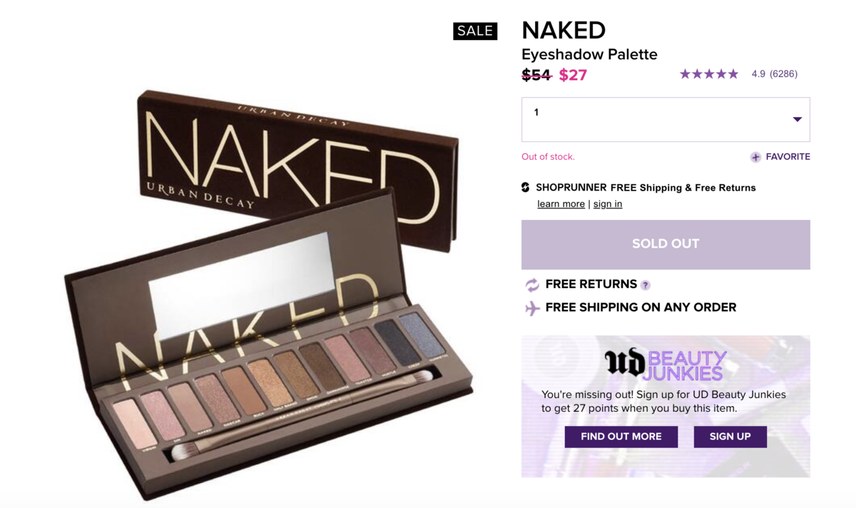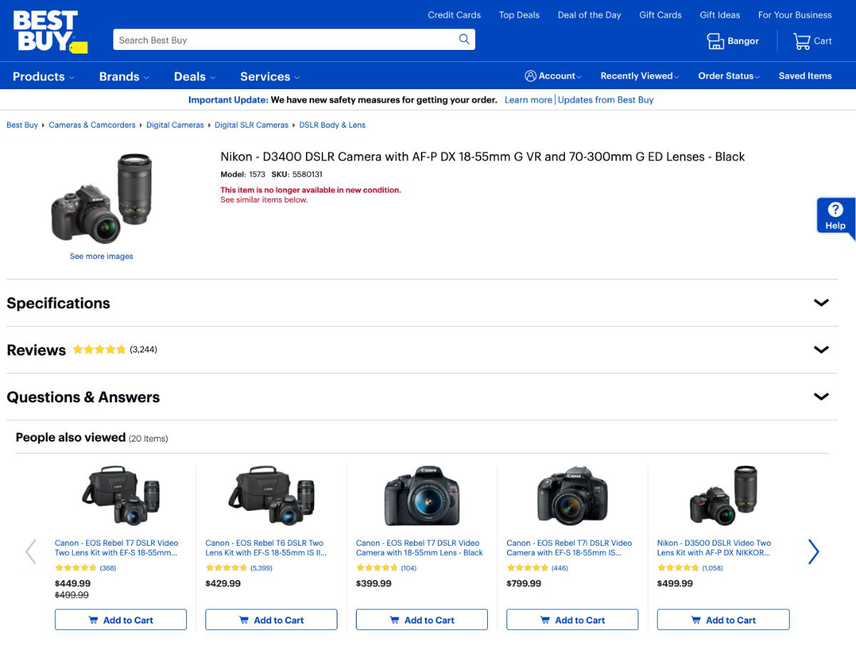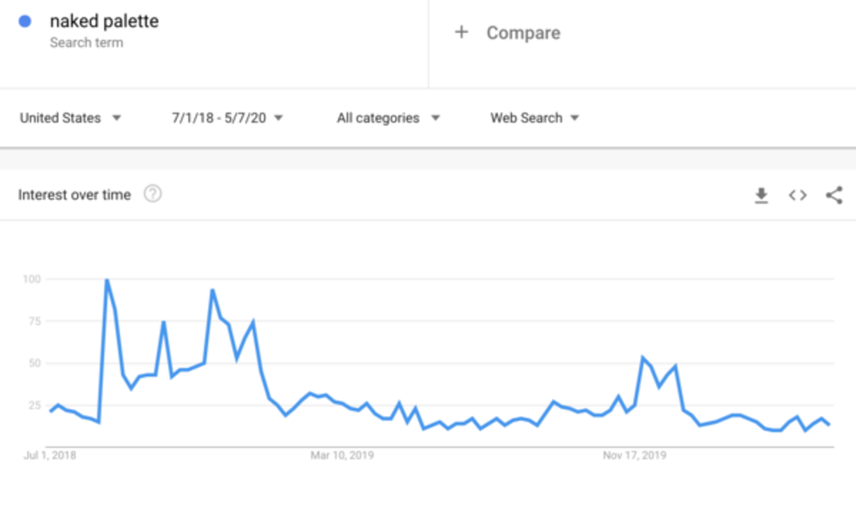How to Handle Discontinued Products Without Ruining Your SEO
Discontinued product pages can have a huge effect on your SEO performance, and your sales. Whether you are dealing with products that are discontinued temporarily or permanently, you have to always balance:
- Crawl budget
- SEO value
- User experience.
Here are SEO tips to avoid making the most common mistakes and to properly handle discontinued product pages.
We all know the eCommerce industry is highly competitive. When you mess up, your competitors benefit immediately. You need to be on top of your game and be the smartest person in the SERP.
One often overlooked aspect of eCommerce SEO is how to properly handle discontinued products. No matter whether these products are temporarily out of stock or permanently discontinued, their product pages have a huge impact on your SEO performance.
Ignoring these implications can lead to losses of money and customers—and sometimes to tears and despair.
On the other hand, if handled properly, discontinued-product pages can even help you boost your rankingsRankings
Rankings in SEO refers to a website’s position in the search engine results page.
Learn more.

In this article, we’ll describe the best practices for handling discontinued-product pages to retain what you’ve worked so hard for, so that you can continue to increase your SEO visibility.
What is a discontinued product?
First off, let’s define what a discontinued product is.
A discontinued product means a product that has become temporarily or permanently unavailable.

Naked Palette eyeliner was discontinued by Urban Decay in 2018. This is how its product page looks today.
Reasons for products being temporarily out of stock can include supply deficiencies, seasonality, or issues on the manufacturer side.
The permanent discontinuation of products, on the other hand, usually means that the product has been replaced by a new version or has proven unsuccessful, or its production has been simply stopped for good.
With Out of Stock items we like to provide a date for expected new stock and a chance for the visitor to leave their email so we can contact them when its back in.
For discontinued items we like to provide an explanation, such as for example: "This item was discontinued on [date]" and a tailored search box to help the user's journey. If we can, we add similar items to choose from. If the item has been upgraded and has its own URL then place a link to it. We never 404 a URL unless there is absolutely no alternative.
Keeping track of discontinued products
Before you can even implement a strategy on how to handle discontinued products, you first need to know about the products in question. How to get this data is different for every organization, perhaps you need to pull this data from an ERP system, CMS, Google ShoppingGoogle Shopping
Google Shopping is Google’s product-based advertising service.
Learn more feed or maybe you're using custom element monitoring .
Do whatever you need to to get this data, because having a good discontinued products strategy in place can make or break your SEO performance.
Keeping tabs on all of your discontinued products across a living, breathing eCommerce site is tough. To make things easier and to give you a birds-eye view at any time, create a hit-scope custom dimension in Google Analytics called "product stock status" (i.e. "Current", "Out of stock" and "Discontinued").
Now, everytime a pageview is fired on a discontinued item, you pass the discontinued status to this custom dimension for that specific product.
You can then see all discontinued items with pageviews at any one time. Got huge demand for some lines? There could be an opportunity to bring it back (if you can) or invest time and resources in providing rock-solid alternatives and a class-leading CX for this specific item.
At the opposite end, if you've super-low levels of traffic for other discontinued items, you can make the necessary decisions for these lines too.
It's even more powerful and opportunistic if you leverage custom alerts and present this data in a Google Data Studio report too.
Best practices for handling discontinued products
The process of selecting the best strategy to get maximum SEO benefits out of your discontinued product pages will depend on whether the products will become available again in the future.
A temporarily discontinued product requires a different approach than a product that is simply no more. Let’s look at the two types separately.
How to handle temporarily discontinued products
If you expect your product to be available again, you should take care of retaining the URL’s SEO value and preparing your visitors for the product’s return. For a period of four to eight weeks, implement these quick measures:
- Keep the product alive and return the HTTP 200 OK status code
- Keep the product in the XML sitemap and keep it in on-site search
- Put “out of stock” or a similar label on the product’s picture
- Hide the product’s price and keep visitors from adding the item to the cart
- Removing the
Offerproperty from the Product Schema markup to prevent Schema penalties - Inform your visitors on when the product will be available again, or alternatively, offer them a way to receive a notification once it’s back in stock
- Pause all active PPC campaigns directing customers to the product’s page
Do not use “out of stock,” “item removed” or similar phrases on the product’s detail page. Texts like these may make Google think of these pages as soft-404 pages, which can ruin a page’s rankings. That’s why you should specifically place this type of text in images.
After the waiting period is over and you expect the product to be back soon, you can extend the four-to-eight-weeks time as much as you prefer. But if there is no sign that the product will ever be available again, consider it discontinued permanently.
I always recommend making discontinued products less accessible in the site, by:
- Removing the discontinued products from promo items and bestsellers etc.
- Listing them last in your catalog so that potential customers see products that are in stock first.
This helps to direct customers’ attention to the products they can buy, as there’s a psychological aspect to this too: products that are currently inaccessible might seem more desirable than the available products. This hurts conversions.
Something I like to do when we're keeping a product page live (either because of its SEO value or because it's only temporarily out of stock) is to deploy a discount code on that page so that I can incentivize visitors to explore the site further and to take action elsewhere.
In addition to this, or sometimes instead of this, I also incorporate an email capture form with the premise "we'll let you know when the item is back in stock" (Or "we'll let you know about similar items" if the product is to be permanently discontinued).
How to handle permanently discontinued products
If you’re sure that a product is discontinued for good, give the product the same treatment as you would give temporarily discontinued products.
Next, evaluate the page’s value by asking yourself these two questions:
- Are there any external links pointing to this product page?
- Does this product page generate any traffic (be it organic, referral, social etc.)?
How to handle permanently discontinued products that have no value
If the product page doesn’t have any value anymore, you can return HTTP status code 410, which will signal to search engines that it no longer exists and show alternative products to visitors. Getting rid of the product page this way saves you precious crawl budget, leaving room for search engines to crawl more meaningful parts of your website.

By using a 410 instead of a 404 you speed up the process of deindexing the page. The difference between a 404 and a 410 status code is that 404 means “Not Found”, while 410 stands for “Gone”. The signal 410 “Gone” sends is much stronger for search engines and makes it clear that you removed the URL on purpose. That’s why they’ll deindex it faster.
How to handle permanently discontinued products that do have value
Returning a 410 for permanently discontinued products, that have many backlinksBacklinks
Backlinks are links from outside domains that point to pages on your domain; essentially linking back from their domain to yours.
Learn more and still cater to an active audience, would be a huge mistake.
There's several approaches to making the most of this value, listed in order of preference:
- Keep alive as long as search demand is high
- Reuse those URLs
- Implementing 301 redirect
You need to be aware of how your system (or the one you're working on) handles out of stock products. I've come across many cases (mainly with Salesforce Commerce Cloud) where the product page is automatically set to return a 404 or 410 HTTP status code once stock hits zero. Some of these pages come back once stock returns, which makes that 410 even more painful.
I've seen countless pages with quality links (Buzzfeed, NYTimes etc.) disappear due to this, with marketing and some SEOs none the wiser about the value of these pages. Talk with the developers and ask them how the system is setup. You'll save yourself a headache in the future.
Keep alive as long as search demand is high
If, despite a product being permanently discontinued, search demand for that particular product remains high you can keep on your site, and treat it as if it were a temporarily discontinued product. The only exception is that now you'll clearly state that the product won't be available ever again.
This way, visitors will still land on the page they were searching for. They won't be able to buy the product, but you showcase alternatives that get the job done too just as well. This approach leads to more conversions — at the end of the day, that's what we're after right?
Then, when the search demand dies out, make the following change to the product page:
- Remove internal links pointing to it
- Remove it from the XML Sitemap
- Remove it from on-site search
- Apply the noindex directive
Implement a periodical process in which you'll double-check the products have served their purpose, and remove them completely — serving a 410 status code.
Special thanks goes out to Mark Williams-Cook for bringing this approach to our attention. Below, he explains it using an example:
An approach we take is "noindexing" by intent, which takes into consideration which type of keywords a product may be ranking for and what users are using within internal search.
For instance, if a graphics card ranks for something very specific to that model, such as NVIDIA 1080Ti, we have to consider the ramifications of what to do if we 301 or 410 this page. 301-ing it to a similar product may confuse the user - they were looking for that specific product and have ended up somewhere else. This means they may abandon the search right there and look at a different site until they find out the product is discontinued and start a new line of research. A similar thing may well happen if we 410 the page because it had low SEO value, if for instance it was bookmarked or got some referral traffic.
In these instances, I would consider using a selective noindex strategy. This means, clearly marking the product as discontinued and offering links to the closest alternatives that fulfil the same job, which has been demonstrably shown to improve conversion rates. While there is active search volume for these pages (both internal or external), we will leave these pages live (and indexable) with an alert in Google Analytics to inform us when organic landing page traffic dries up.
Once the organic traffic has dried up, we will use a noindex tag and remove any internal references to the page. The pages will still exist with no impact on crawl budget or redirect overhead and can still be referenced if needed.
Reuse those URLs
If the URL of the discontinued product is reusable for other, highly related, products, then you can simply adjust the content and keep the page itself alive. Alternatively, you can use the URL for a new landing page that refers to the previous content, or to a portfolio of alternative relevant products.
If the URL doesn’t have any such use, but still holds SEO value, the easiest way to utilize it is to implement a 301 redirect to a highly relevant URL. However, this is easier said than done.
When dealing with permanently discontinued products, I'll do one of two things:
- If there's still demand for the specific model, and the page was ranking on primarily model specific terms, I'll make a new blog post and 301 the old product URL to it. It will be titled something along the links of "What Happened to %ProductName%?". This is a great opportunity to not only grab CTR, but provide a good resource that explains when it got discontinued, and offer some alternatives.
- If the page ranked for more generic terms like Brand + Product Type, I'll generally 301 redirect to a newer model (assuming one's available.)
Implement 301 redirects to highly relevant URL to prevent soft 404 errors
Redirecting your permanently discontinued product pages to products that aren't very relevant can result in errors that you’d do best to avoid.
Let’s say you’re a former retailer of black socks, but for some reason, this very type of socks has disappeared from the Earth’s surface for good (probably a washing machine ate them all). As these socks were super popular, their product pages have gained a lot of links and traffic. And you want to use that traffic to sell other products.
Using a 301 redirect, you can suggest other—larger, smaller, or warmer—socks that are highly similar to the black socks of yore. This way, the value of your URL remains and you can still profit from the discontinued version.
When dealing with discontinued products, I firmly believe the most important thing to keep in mind is the synergy between SEO and User Experience.
And, when it comes to redirects this can be real tricky. I always analyze data from Google Analytics, Google Search Console and other tools to gather the information I need to find adequate replacements. These replacements can be similar products, custom layered navigation pages (such as brand + category combination), blog posts, or other relevant pages. The only thing that matters is that everything we do on this front must be both SEO-friendly and user-friendly.
Always implement 301 redirects to the most relevant or similar product to ensure you don't experience high bounce rates as people didn't expect to see another product, especially one that's not relevant to the product they were searching for in the first place.
For an even better user experience, add a blurb of text to the redirect's target page stating the product they were looking for is discontinued and how this current product is perhaps relevant to them instead.
What happens if you redirect to an irrelevant page?
But if you use the same redirect to link to an irrelevant item—let’s say a gray hoodie—it might happen that the search engines will evaluate such a redirect as a soft 404 error, meaning that you will lose all the SEO benefits.
The same applies for redirects to categories, or even your homepageHomepage
A homepage is a collection of HTML documents that can be called up as individual webpages via one URL on the web with a client such as a browser.
Learn more. If you have the opportunity, it pays to redirect items to items and categories to categories to avoid such an unfortunate outcome. Redirecting to homepage should be your last option.
Three things to keep in mind
When dealing with discontinued products, keep in mind that you need to take into consideration these three goals:
- Preserving crawl budget
- Preserving page value
- Providing a good user experience
There's no “one size fits all” approach to this, so adjust your strategy based on which of the goals above you need to focus on the most.

Preserving crawl budget
When it comes to retaining the right balance of crawl budget and link value, we recommend that you monitor internal linksInternal links
Hyperlinks that link to subpages within a domain are described as "internal links". With internal links the linking power of the homepage can be better distributed across directories. Also, search engines and users can find content more easily.
Learn more leading to 404 or 410 pages.
Preserving page value
But don’t just look at your own site. You also need to periodically check if there are any backlinks returning 4xx errors on your site that need to be redirected.
Providing a good user experience
When you’re deciding on a solution to discontinued product pages, you should always take into account how your visitors will feel about your solution. Let this drive your approach to dealing with these pages. At the end of the day, every web site is different and may require a (slightly) different approach.
What about the situation in which product demand remains high?
Sometimes when a product is discontinued permanently, it remains popular among users and the demand is still high. When this happens, you can utilize its popularity and cater to people who would like to know more about it.
A popular beauty feature from Urban Decay called Naked Palette can serve as a good example here. This 12-shadow eyeliner set was a must for many women until August 2018, when the company discontinued its production.
The product has retained its popularity to this day and has bounced back a few times, as you can see on Google TrendsGoogle Trends
With Google Trends the interest in relevant search terms can be analyzed. This allows search queries to be valued and, over the course of time, such as for the seasonality of search terms, be classified.
Learn more.

Despite its discontinuation, the demand for Naked Palette eyeliner has remained high.
In other words, the popularity of certain products doesn’t end with their discontinuation, and that can be leveraged into a huge advantage.
Apart from displaying alternative products, the discontinued product page can serve as a reminder of a once legendary item and can provide information to customers. And informational content has huge value for overall SEO performance.
Displaying a 404 or empty page to your beloved customers will not only result in a bad user experience but also in lost sales. When this happens at scale, this can have a significant impact in revenue for your site (and not only for organic, but for other channels too).
Suggesting similar products when an item is temporarily unavailable, a message notifying that the product will return soon or adding an email form to notify the visitor once the stock is back, are key tactics to ensure a good user experience and recover those lost sales.
Furthermore, remember to move those products down to the end on the category page to avoid disrupting the user journey and to mark them down as "Out of stock" on their parent category pages, so that the user knows they are out of stock without having to visit the product page.
Closing thoughts
Dealing with discontinued products is all about balancing preservation of crawl budget and page value, while still satisfying the users that visit your site.
There is no “one size fits all” approach to dealing with discontinued product pages, but there’s one thing we know for sure: your visitors are the only ones who’ll purchase products on your site. A satisfying user experienceUser Experience
User experience (or UX for short) is a term used to describe the experience a user has with a product.
Learn more should be topmost, as that’s what’s going to make you money.
Frequently asked questions about discontinued products
What is a discontinued product?
A discontinued product is a product that has become either temporarily or permanently unavailable for purchase.
Should I keep discontinued product pages up?
Whether or not to keep a discontinued product’s page alive depends on whether the product is discontinued temporarily or permanently, as well as whether it possesses SEO value.
How do I preserve the SEO value that product pages have?
You can reuse the page for other products, landing pages, or portfolios, or you can implement a 301 redirect to a highly relevant product page.
Should I redirect discontinued products to the homepage or product category page?
No, redirecting product pages to categories or your homepage can result in a soft 404 error, meaning you could lose SEO value. Always redirect to a highly relevant segment of your website such as a similar product.





![Cody Gault, Migration Services Lead, [object Object]](https://cdn.sanity.io/images/tkl0o0xu/production/deba62b44932c3f4231f9dfad1354b45547c00d0-1771x1771.png?fit=min&w=100&h=100&dpr=1&q=95)











